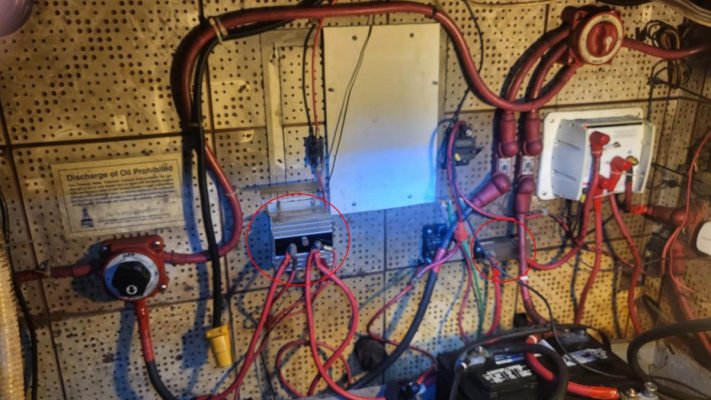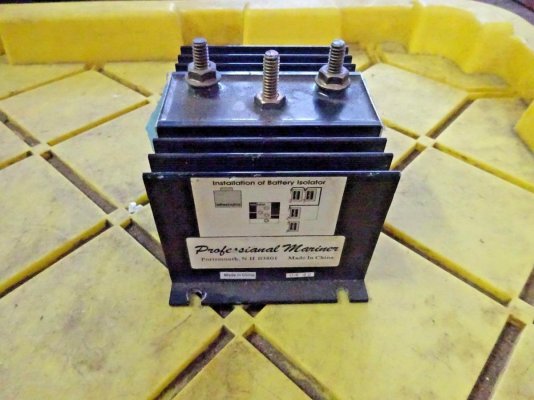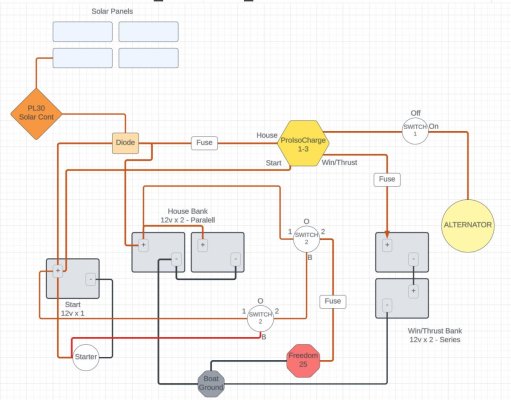DBG8492
Senior Member
- Joined
- Jan 16, 2023
- Messages
- 289
- Vessel Name
- Sovereignty
- Vessel Make
- 1986 Marine Trader 36 Sundeck
I have a new-to-me Marine Trader I just bought. The previous owner died about 18 months ago, so there's not much info about the systems. There were a lot of sketches and diagrams, but they were unorganized and not much help.
So I am trying to sort through things on my own.
I have most of the electrical system mapped out, but there are two things that I'm unsure of.
In the attached photo, you can see two devices circled in red. I think the one on the right is a shunt between the ProMarine ProIsoCharge "House" output and the solar or maybe it's just a fuse - I'm not sure - that's why I'm asking.
I say it's between the ProIso and the solar because the other device - to the left and also circled in red - is connected to the solar controller by the red wire that runs up the wall just next to it.
I have asked two other boaters I know who have solar, and neither of them knows what these are.
Does anyone know?
These are the last two pieces of the puzzle I need to complete my own map of the system so any help is appreciated.
So I am trying to sort through things on my own.
I have most of the electrical system mapped out, but there are two things that I'm unsure of.
In the attached photo, you can see two devices circled in red. I think the one on the right is a shunt between the ProMarine ProIsoCharge "House" output and the solar or maybe it's just a fuse - I'm not sure - that's why I'm asking.
I say it's between the ProIso and the solar because the other device - to the left and also circled in red - is connected to the solar controller by the red wire that runs up the wall just next to it.
I have asked two other boaters I know who have solar, and neither of them knows what these are.
Does anyone know?
These are the last two pieces of the puzzle I need to complete my own map of the system so any help is appreciated.



